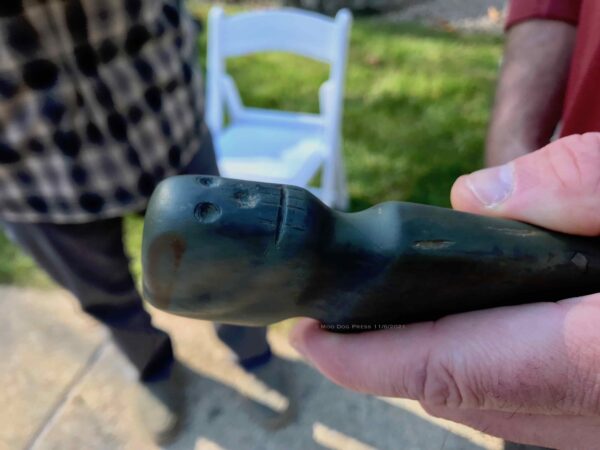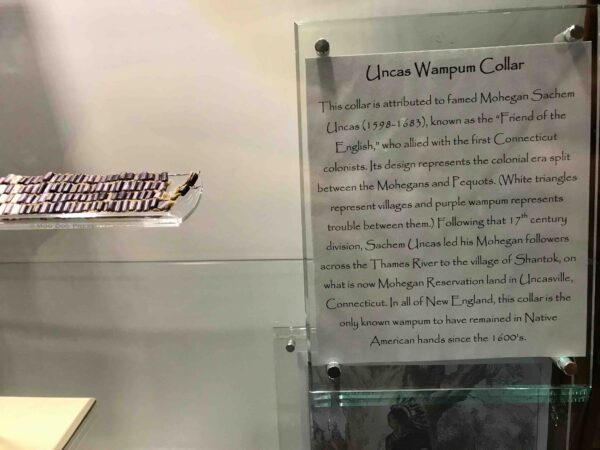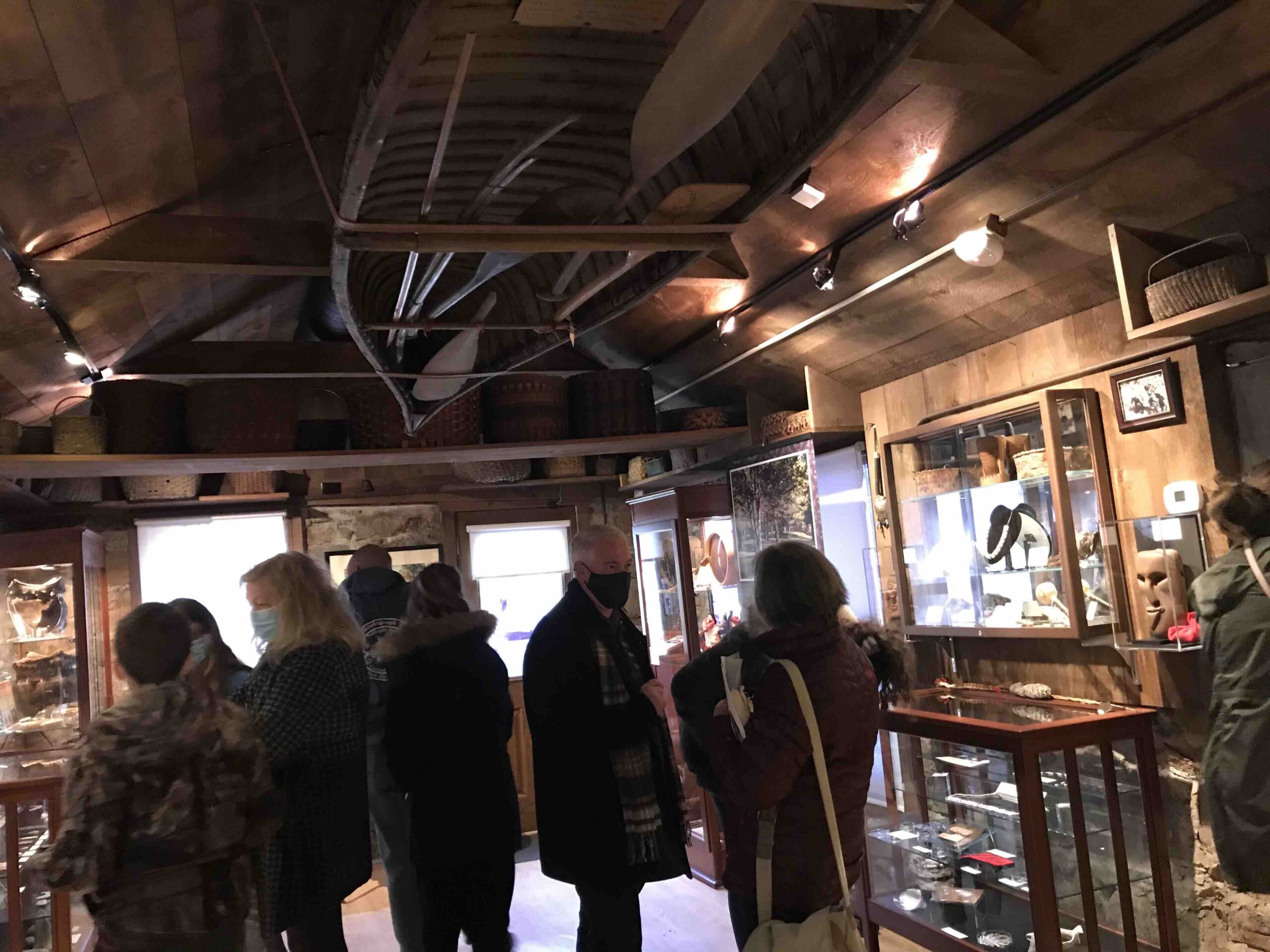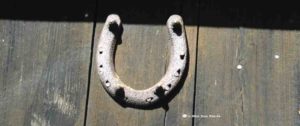COVID-19 Era: Time Travel To Tantaquidgeon Museum’s 90th, Uncasville
Editor's note: This story has been moved and incorporated into another newer feature. Linked here.

The past and present meet. Detail of an exquisite stone object found and brought to the 90th celebration at Tantaquidgeon Museum, questions asked of James Quinn, Tribal Historic/Archaeology Manager, Mohegan Tribe Cultural and Community Programs, who is shown holding the artifact with the man who discovered it.
ng stories about the humans living on the land for centuries helped the newcomers stay alive. Traditions, lives lived.
Still here. Decimated by factors including genocide (go ahead, read history the eye-witness accounts), battles, viruses. Connections and communities. Commitment. Courage.
The road ere leads back to the Mohegan church, an important site.
The Mohegan Tribe site gives this brief summation of the Ashbow Burial Ground. “Many 18th-century Christianized Mohegans were buried at Ashbow Burial Ground. Among them, is famed culture-keeper Martha Uncas. A house was built atop this burial ground in the mid-twentieth century and removed by the Tribe when it restored the burial ground in 2000.” A more recent brochure details the desecration over years (it is stomach-turning to read, but revealing) and years later, the painstaking recovery by the tribe. A memorial in the shape of the tribe's logo with pillars and markers has been created. Reading a fold-out history of related sites with accompanying images is a learning experience. This knowledge should be paired with a trip to places to connect history to the right now. All ages. Humbling to try to feel the scope of what is ahead to read, find, follow, absorb about history and stories, land and water, etymology. Language.
Pilgrims and odd hats, buckles on shoes, a questionable rock under a temple-like structure, a shared meal that becomes Thanksgiving? But.
Underfoot, white bits of clam shells. The same as seen in Massachusetts at the Hail to the Sunrise area on the Mohawk Trail which includes a stone-built circle (a water feature, pool?) and memorial stones. Inscribed stones inset in the wall are from tribes and councils from throughout the continent. The grounds are open to the public. Older stones, noted. Weetamoo is here. When on family trips in decades past, thoughts ran to the forerunner of the road, which was a path.



